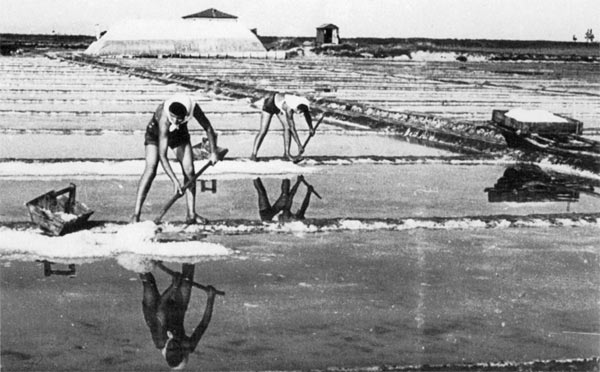Cervia Saltworks
Home " Cervia Saltworks " Page 5

Hotels near Saline Cervia, a selection of hotels in Saline Cervia near Saline with hotel + entrance offers
The salt pans of Cervia belong to a wider region identified as the salt route that stretched from Cesenatico to the Venetian Lagoon.
This region of the Upper Adriatic was characterised by a morphological constitution of the coastline that was low and clayey and therefore easily accommodated the waters of the sea at high tides.
As the sea recedes, veils of water are created that, when exposed to the scorching summer sun, cause evaporation, leaving salt deposits in the shallows.
Since prehistoric times, the coast of the Upper Adriatic has been home to salt pans, the best known being those of Aquilea, Chioggia, Grado, Padua, Venice and further south Comacchio, Ravenna, Cervia and Cesenatico.
The first records in the modern era date back to 965 when salt was a wealth for those who had it as it was the most widely sold or bartered product.
Cervia's salt pans can most probably be traced back to the historical period of the nomadic farming populations and Umbrian shepherds who, in the good season, travelled along the Savio valley to the low clay basins of the coast to collect and supply themselves with salt deposited spontaneously.
Evidence of settlements of those populations near the sea and near Cervia has been found.
The earliest cultivation of salt pans may date back to Greek colonists who founded Ficocle, the ancient Cervia known for its salt, which was produced and harvested in the lagoon.
Hotel Search
TYPE
HOTEL CLASS
HOTEL SERVICES
POINTS OF INTEREST
- Igea Marina Hotels
- Viale Pinzon 72, Bellaria-Igea Marina
- Rivazzurra Hotels
- Viale Trapani, 1 - Rivazzurra di Rimini
- Hotels Cervia
- Via Monreale, 6 Cervia, Ravenna
- Hotels Rimini Marina Centro
- Viale Cirene, 56 Rimini
- Pinarella di Cervia Hotels
- Via Val D'Arno, 4 Pinarella (RA)
- Torre Pedrera Hotels
- Via S.Salvador 42, Torre Pedrera, Rimini
- Hotels Cervia
- Madonna della neve 13, Cervia
- San Marino Hotels
- Cesenatico Hotels
- Viale Tiziano, 42 Cesenatico
- Hotels Cervia
- Via Monreale 4, Cervia
- Cesenatico Hotels
- Viale Carducci 129, Cesenatico (FC)
- Cesenatico Hotels
- Viale G. Carducci, 194 Cesenatico (FC) Riviera Adriatica
- Pinarella di Cervia Hotels
- Via Valpadana, 6 - Pinarella (Ra)
- Milano Marittima Hotels
- Viale 2 Giugno 68, Milano Marittima
- Viserbella Hotels
- Viale Brunelli, 10 Rimini (Viserbella)
